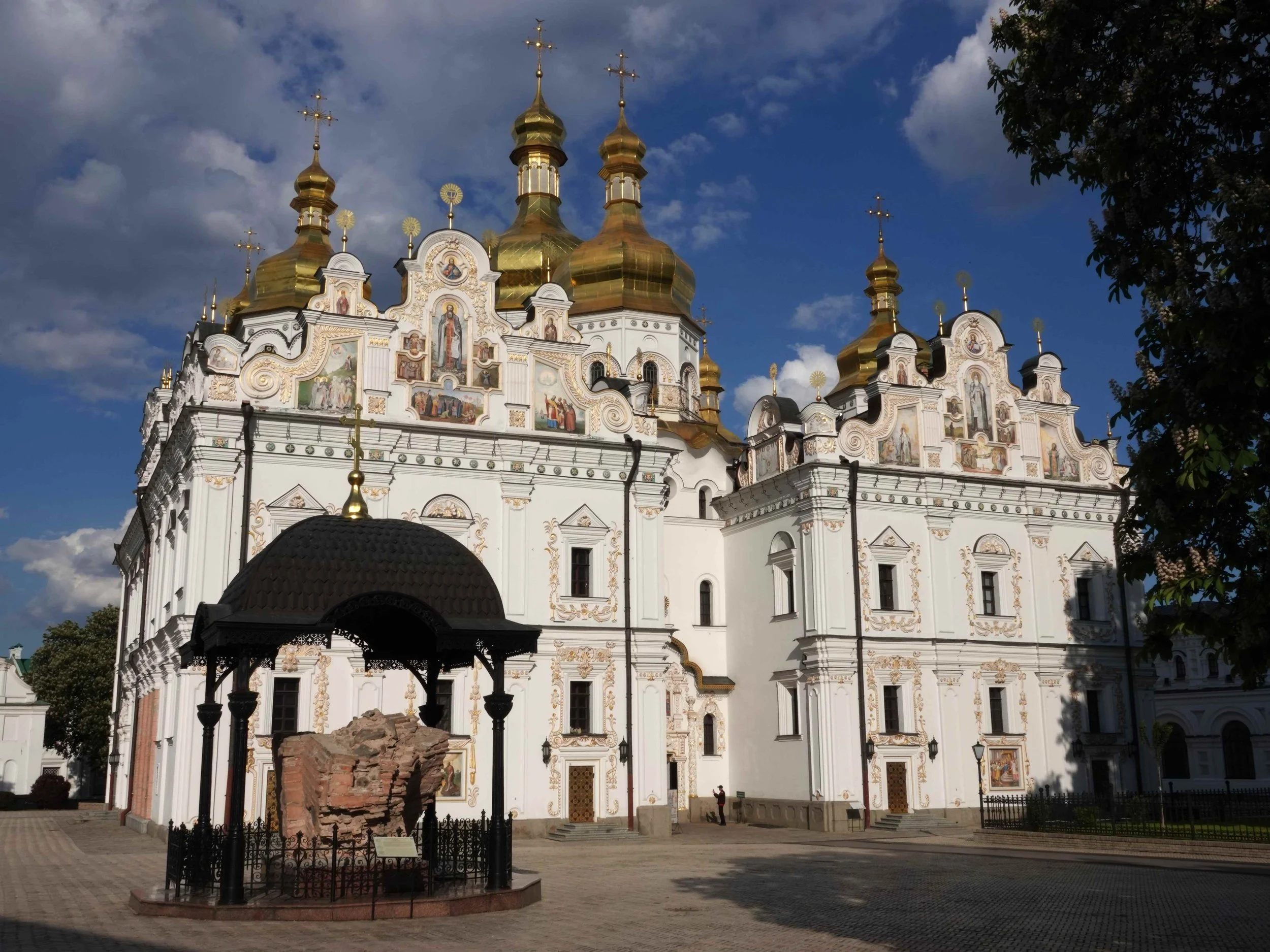Kyiv’s Pecherska Lavra monastery - contested site in a divided church
Kyiv was founded around 500 AD. The Vikings conquered it around 900 AD and made it the capital of their already-vast kingdom of Rus. In 988 Kyivan Grand Prince Volodymr accepted Christianity. The Pecherska Lavra (Cave Monastery) was founded 63 years later in 1051 AD just outside the city.
Unfortunately the cave church is currently closed indefinitely for renovations, but several other buildings on site are still worth a visit. And equally interesting is the site’s significance in the current schism within the Ukrainian Church.
After Kyiv was sacked by the Mongols in 1240, princes from up north moved the seat of the Church out of Kyiv and up to the Moscow area around 1300 AD. And so, churches in and around Kyiv became subordinate to Moscow for the next 700 years.
In 1990 as the Soviet Union was unravelling, the Moscow Patriarchate granted some autonomy to the church in Ukraine, but it wasn’t enough for some. In 1992, a few churches broke away and declared Autocephaly (independence) with a new patriarchate in Kyiv. Initially this wasn’t widely recognised, but their membership began to grow after Putin’s first invasion in 2014. The old Moscow-aligned church (the Ukrainian Orthodox Church or UOC) was the “establishment” church that most influential Ukrainians belonged to, while the Kyiv-based Orthodox Church of Ukraine or OCU was a small upstart driven by patriotism and nationalism. In 2018, Ukraine’s then-president (previously a backer of the “establishment” UOC) threw his support to the “upstart” OCU , hoping to unify everyone under the new Kyiv Patriarchate and end the divisions. And then in 2019 the Global Orthodox leadership in Istanbul recognised the autocephaly of the OCU, enraging the Russian church in Moscow. The “establishment” UOC began to lose members as it was perceived as overly accomodating of the Russian occupation of Crimea, Donetsk and Luhansk.
The Russian church in Moscow has been a key base of support for Putin since 2011, when he announced that he intended to amend the constitution so he could be president for life. Massive nationwide demonstrations put him on thin ice, but the Russian church swung firmly behind Putin and thus turned the tide when he declared war on LGBTQ’s. 8 years later, the Moscow Patriarchate’s fury at the Ukrainian autocephaly was a factor in Putin’s decision to invade Ukraine in 2022.
After the 2022 Russian invasion, the UOC declared that it had severed all ties with the Moscow Patriarchate, but the lack of any documentary proof of that (along with several collaborationist statements and actions by various clergy) did not help their case. The formerly-dominant UOC is heading for extinction in all areas of Ukraine not occupied by Russia. Since the invasion, the Ukrainian government has declared the OCU as the only legitimate Orthodox church in Ukraine, and the government evicted UOC monks from the Pecherska Lavra in late 2022.
Entrance to the Lavra. The site is about 5 miles south of the Maidan (Independence Square), well within the modern city limits but well outside the medieval walls when first built.
The Cathedral of the Dormition. In the foreground is a fragment from the original walls, destroyed by the Mongols in 1240.
Cathedral interior
The Cathedral at left and the Refectory Church under stormy skies
The Refectory Church. This is one of the site’s newest buildings, constructed in the 1890s.
Interior of the Refectory Church
The refectory (banquet hall) in the refectory church building
Several museums on site commemorate various aspects of Ukrainian history. This is a photo montage of writer Sholom Aleichim; he and Isaac Babel were the leading Yiddish-language Ukrainian writers of their day. Ukraine’s once-sizable Jewish community mostly arrived after the great exodus when they were evicted from Spain and Portugal in 1492.
The monastery viewed from the north. In the foreground at right is the entrance to the Holodomor Museum, commemorating Stalin’s deliberately-engineered famine to exterminate millions of peasant farmers who resisted collectivisation. See the “Brief History of Ukraine” page of this blog for more info on that.
This church just outside the monastery grounds is new, and dedicated to Afghan war veterans. 13,000 dead in that 10-year war was considered a national scandal in the USSR. In just over 3 years, Russia has lost over 1 million killed or severely wounded in Ukraine, and no one seems much bothered by that.
Also here south of town are the Soviet-era Motherland Statue (the largest statue in Europe) and Ukraine’s World War II museum, which has been expanded with exhibits from the ongoing War of National Survival. See the “Ukraine at War” page of this blog for photos of some exhibits inside.
Typical Socialist-realist WWII monument near the Motherland statue













